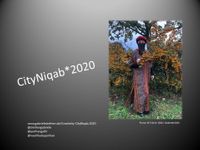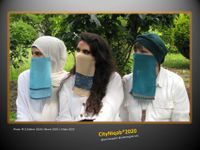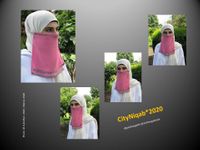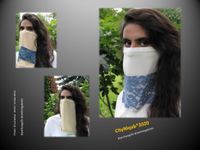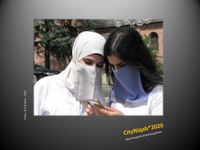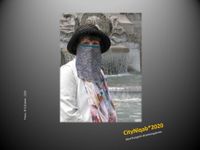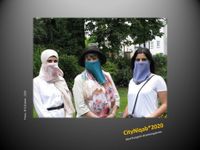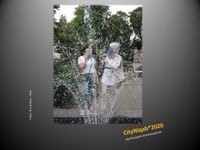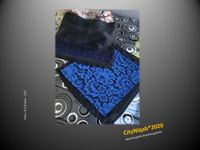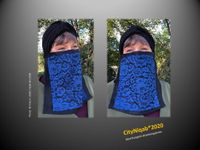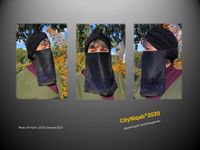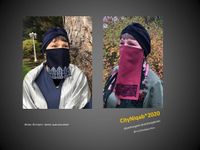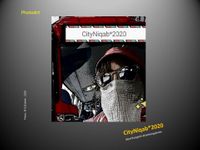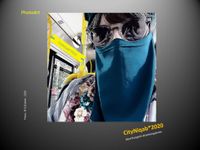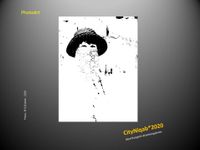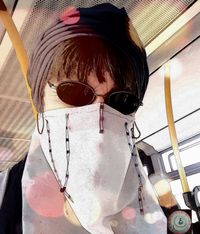| Creativity
Project | Arbeitsversion (in deutscher Sprache)
Oya - Kunst am Kopf 2023in Zusammenarbeit mit Perihan Gelir.Instagram: @ziethengabriele.de Kunstvoll gefertigte Nadelspitzen / Oya / Fanafillah gehören zur traditionellen Verzierung der Kopftücher türkischer Frauen und bestimmter Haushaltsutensilien (z.B. Handtücher). Üblicherweise gehören spitzenverzierte Kopftücher, Handtücher, Bettumrandungen zur traditionellen Aussteuer einer türkischen Braut. Diese Geschenke stammen vorwiegend von den älteren Mitgliedern der Familie. Inwieweit der Gebrauch im Alltag – insbesondere der Kopftücher – fortgesetzt wird, ist unsicher, da zur Zeit die Mode der türkischen hijabs in Deutschland einem trendorientierten Wandel europäischen Stils unterworfen ist. Senden Sie uns gerne ein Photo Ihrer Lieblingsspitze (wie alt ist diese?) und schreiben Sie Ihre Geschichte und Erinnerung dazu in deutscher, türkischer, englischer, französischer oder russischer Sprache an Project | CityNiqab*2020 In spring 2020 a worldwide vivid debate on health care and masks encouraged us to remember an old tradition that already was known in female fashion since Graeco-Roman Antiquity (cf. the figurines from Tanagra, fashion in Late Antiquity, Christian and non-Christian female gowns in the late antique Mediterranean); actually the subject is highly under debate concerning today's Oriental female gown with its black niqabs. Concerning this subject some years before an essay prepared by the author of this project was discussed on occasion of international congress held at Bibliotheca Alexandrina in Alexandria (Egypt) in 2010, and finally published in 2016.* Over years I talked about the results also with colleagues, students and friends from several other countries. Finally an unpleasant spring in 2020 encouraged us to do more and to try experience by ourselves in order to describe a practized personal impression concerning the theme. Therefore we decided to bring up the subject to the street, designed in pure color, worn with elegance and fun. We tried to "translate" a highly debated piece of cloth into an understanding of female creativity and charming dialogue. Modern CityNiqab*2020 can be combined with all kind of daily or elegant fashion including modest fashion (e.g. https://cecosh.com) and it looks pretty if matched with suitable eye-makeup. It depends from the individual perspective and our project caused unexpected friendly talks during every-day situations in the city when we walked along the streets and to the parks. Interest was not only caused by the young "fashionistas", but much more from side of the so-called 40-50 years old "best agers" - ladies of selfconfidence and courage. The eldest lady we talked with and who asked us for a special easy-to-wear variation of CityNiqab*2020 was a 83-year old former German entrepreneur, who since decades is known to be always open-minded for new creative projects. And we found out: across cultures and religious beliefs, colour and materials from good quality make things change from a simple piece of cloth into pure fashion to be worn through annual seasons. And they make people smile ...... After one year of so-called "Lockdown" 2020/21 the project launched a great experience in intercultural dialogue with many people on the street and in the shops. Esp. during weeks of hot summer sun in summer 2020 CityNiqab was a suitable protection of face-skin. Although only less women felt encouraged to make a wearing experience by themselfes, the initator of the project felt really comfortable when using this small piece of cloth for simple skin-covering, because of the precious materials such as silk, chiffon and high-quality cotton, it was much more easier to breath during speaking, walking and running, too, than using the boring paper masks. When I was on travel in spring 2022 I visited the recently opened National Museum of Egyptian Civilization in Cairo/Egypt. By occasion I recognized in one of the exhibition cases a beautiful small Tanagra figurine with a veiled face. The green arrow on the snapshot shows the conture of the ancient veil. So I am sure that CityNiqab also in future will be part of my personal dress and style. I greatly thank Marli, Merve, Perihan, Süheyla, Vildan and Zehra for their proposals and creativity, and for their courage to realize and perform the project. Best thanks also to MuslimShop (Mainz) for performing some examples (www.muslim-shop.com [Stichwort: Niqab]). [Date: 28.06.2020 | 27.07.2020 | 12.10.2020 | 03.11.2020 | 20.02.2021 | 04.06.2022] Photos/Video: G. Ziethen 2020, 2022 & P. Gelir 2020 *Publication (see >Essays): G. Ziethen, Beautiful Dwelling: A Contribution to Economic and Social History in Egypt, and the Region oft the Red Sea in Late Antiquity. In: Loaay Mahmoud / Ahmed Mansour (Eds.), Copts in the Egyptian Society before and after the Muslim Conquest. Archaeological, Historical and Applied Studies. Papers in English and French at the First International Coptic Studies Conference (Part II). Life in Egypt during the Coptic Period, “Towns and Villages, Laymen and Clergy, Bishops and Dioceses. Bibliotheca Alexandrina Center for Calligraphy Studies, 21-23 September 2010 (Alexandria 2016) 121-133. – ISBN: 978-977-452-324-1. – Dar El-Kuttub Depository number 11181/2015. Our proposals, more pictures and how to try CityNiqab*2020:
PhotoArt #Niqab | Photo © GZiethen, 2020
| |||||||
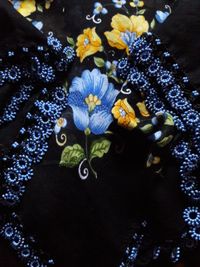

.jpg/picture-200?_=19b59bec2ab)
